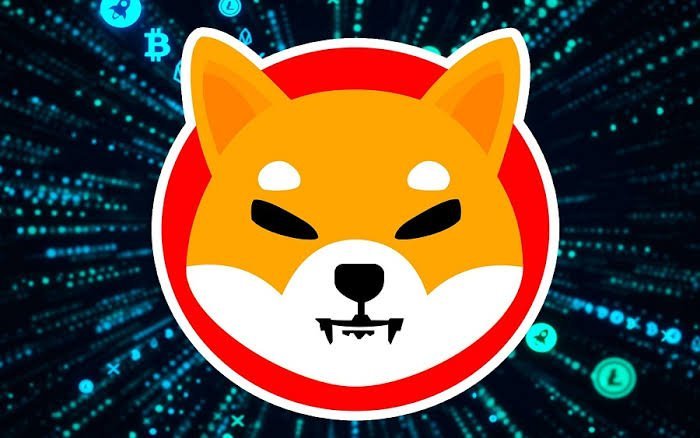Cryptocurrency That Could Crush Shiba Inu – In recent years, the crypto economy has grown, generating enormous riches. CoinMarketCap.com presently includes over 9,200 different cryptocurrencies with a total market capitalization of $1.75 trillion.
However, with so many possibilities, identifying worthwhile investments can be challenging, especially with meme tokens dominating the news.
Shiba Inu (CRYPTO:SHIB) surged to prominence last year, producing returns of over 42,000,000 percent in 2021. Many investors are looking for a repeat performance in 2022, now that the meme token is down 75% from its high.
Some are even predicting a price of $1 in the near future. Regrettably, that is simply not doable. (Its current value is around $0.000021.)
More importantly, Shiba Inu’s steep drop does not necessarily signal a similarly strong rebound. All that counts today is what kind of future profits the token can generate. As a result, numerous cryptocurrencies appear to be far superior investments.
Also Read: Recently Released Metaverse NFT Coin Gained 32% In Few Hours – Stripto
Let’s take a look at this:
The Case for Terra
Terra (CRYPTO:LUNA) is a programmable blockchain that is supported by two tokens. First and foremost, TerraUSD is a stablecoin that is pegged to the US dollar. Other currencies can be linked to the Terra stablecoin.
The second is LUNA, a cryptocurrency that absorbs volatility and ensures that each stablecoin remains at its intended price. If demand for TerraUSD rises above $1, the network will incentivize token holders to convert their LUNA to TerraUSD, increasing supply and lowering the price. In reverse, the system operates the same way.
Terra is also built on the Cosmos framework, which is based on the Tendermint protocol, which is a high-throughput proof-of-stake consensus method.
Terra can achieve this by scaling up to 10,000 transactions per second (TPS) and completing transactions in two seconds. Ethereum, on the other hand, can process up to 30 transactions per second and takes at least one minute to complete. Due to the network’s inadequate throughput, prices have risen dramatically in recent years.
So, why should you invest in LUNA? Terra is popular among decentralized finance (DeFi) investors due to its high throughput. With $15.9 billion invested in the blockchain, Terra is the second-largest DeFi ecosystem (behind Ethereum).
Of course, Terra powers a slew of intriguing goods, but let’s focus on two that have the potential to disrupt the market:
• First and foremost, Anchor is a DeFi protocol that is meant to take the role of traditional savings methods. TerraUSD is lent to the platform in exchange for interest, and the current yield is 19.5 percent APY.
• PaywithTerra, on the other hand, enables e-commerce businesses to accept Terra stablecoins. It’s also fast since it’s built on Terra’s highly scalable blockchain, which eliminates the need for traditional financial institutions.
Transactions are settled faster, and there are fewer fees involved. Merchants pay a flat fee of $0.05 for every transaction. For example, for domestic transactions settled in US dollars, PayPal charges 3.49 percent plus a fixed fee of $0.49; for cross-border transfers, the percentage is significantly higher.
In brief, DeFi products such as Anchor and PaywithTerra generate demand for Terra stablecoins, which in turn generates demand for LUNA because the network incentivizes token holders to convert LUNA to Terra in order to keep stablecoin values stable.
And as a result of this demand, LUNA’s price should rise. The more Terra is utilized, the more LUNA is worth, as the programming team puts it. As a result, this cryptocurrency appears to be a far superior investment than Shiba Inu.
Also Read: Cryptocurrency Scams And How to Avoid Them
The Case Against Shiba Inu
Shiba Inu is an ERC-20 token, which means it’s run on the Ethereum blockchain by a smart contract. To put it another way, Shiba Inu lacks its own blockchain and, as a result, is unable to host its own ecosystem of smart contracts and decentralized applications (dApps).
As a result, its long-term utility is limited, and few businesses or merchants accept it as payment.
Shiba Inu does, after all, have its own decentralized exchange (ShibaSwap), which allows investors to generate passive income by staking (burying) SHIB tokens and providing liquidity (digging). In fact, if you stake SHIB right now, you can make 30.5 percent APY.
Unfortunately, once you quit supplying liquidity or staking, the platform locks 66 percent of your earnings for six months, at which time the cryptocurrency’s worth could plummet.
There are, of course, additional initiatives in the pipeline. ShibaSwap will include a non-fungible token (NFT) marketplace where users may purchase and trade one-of-a-kind Shiboshi tokens (Shiba Inu-branded NFTs).
Those Shiboshis have unique characteristics, such as laser eyes, that will be useful in the upcoming Shiboshi game. However, an NFT-based blockchain game isn’t exactly groundbreaking in terms of functionality, and the Shiboshis NFT collection doesn’t even make the top 100 on OpenSea, the world’s largest NFT marketplace.
The future of the Shiba Inu is, at best, questionable. The project is unable to sustain its own autonomous environment, and the token itself has limited utility. As a result, I believe there are more effective ways to invest in the crypto economy.




